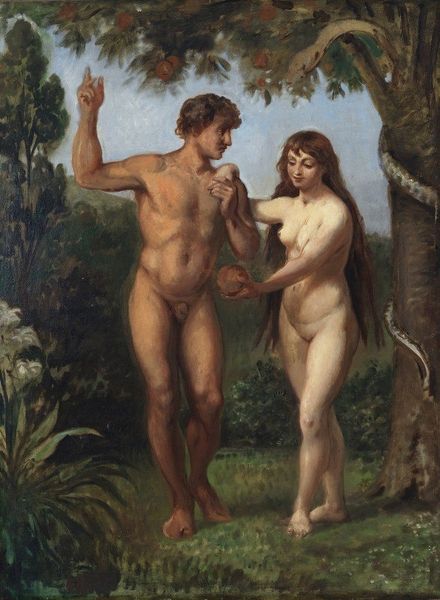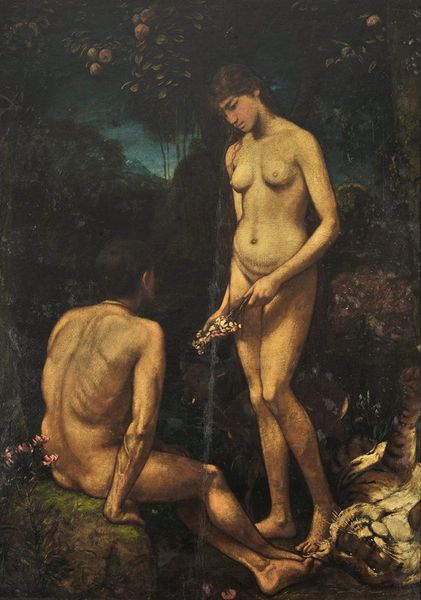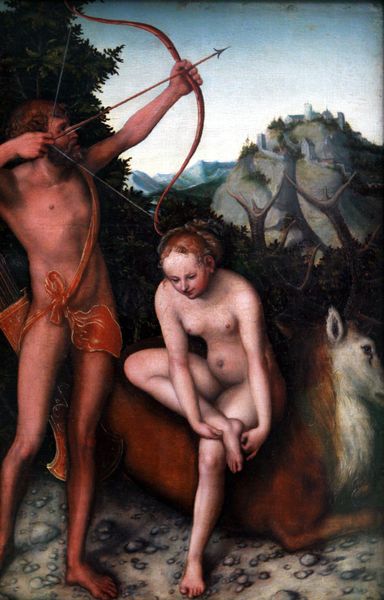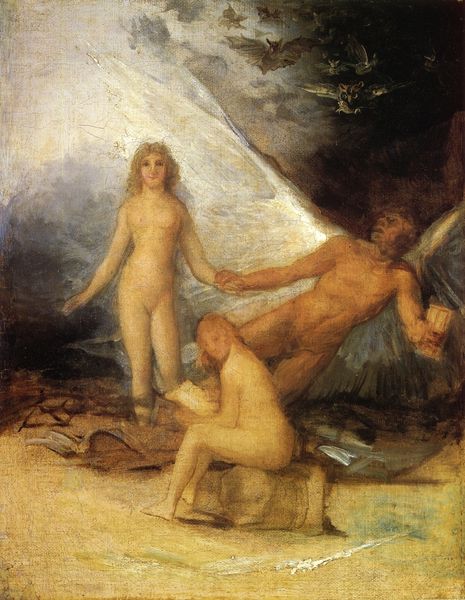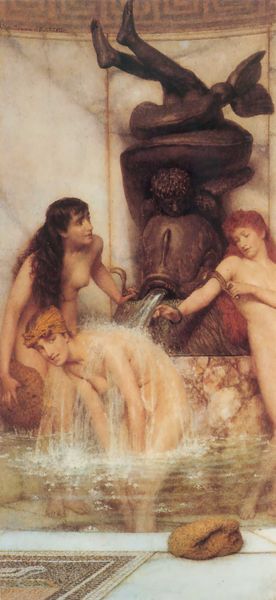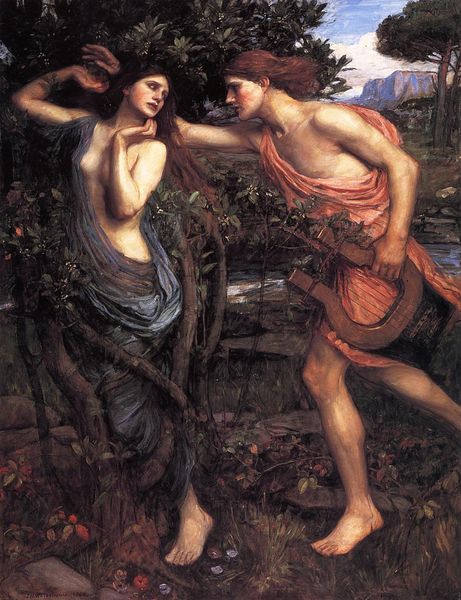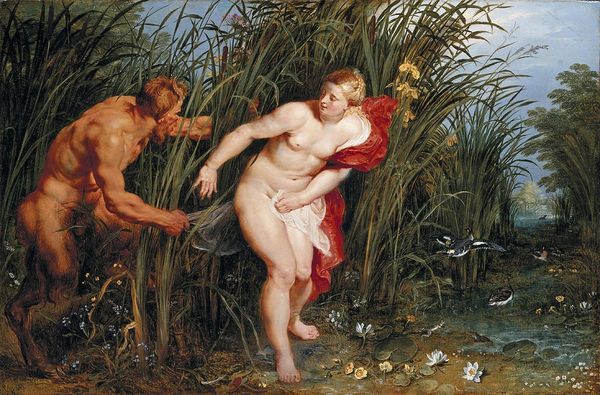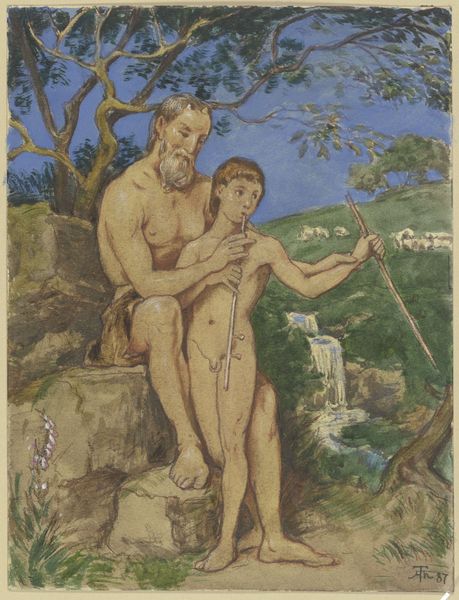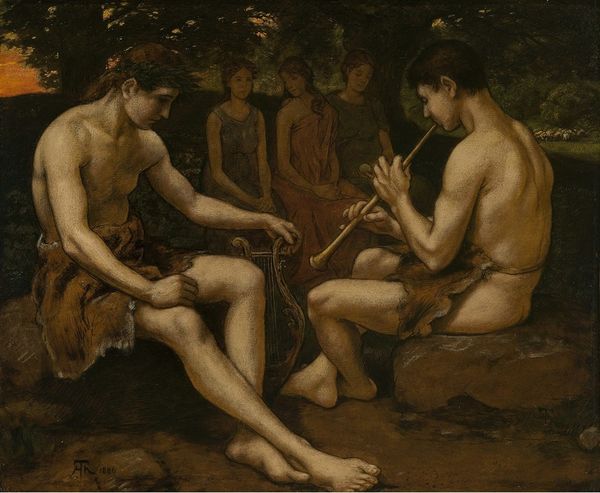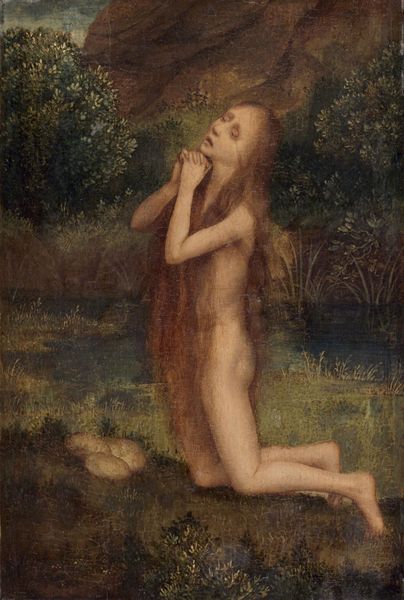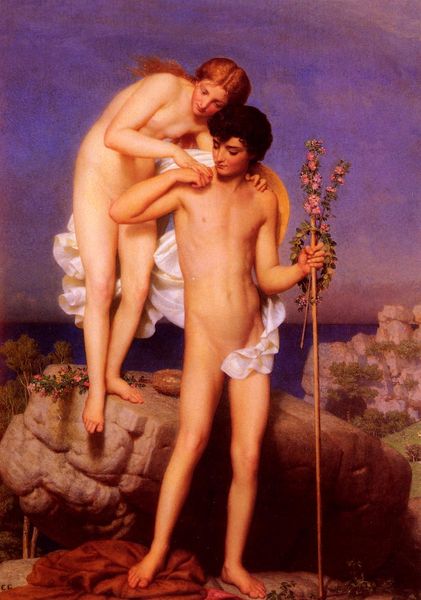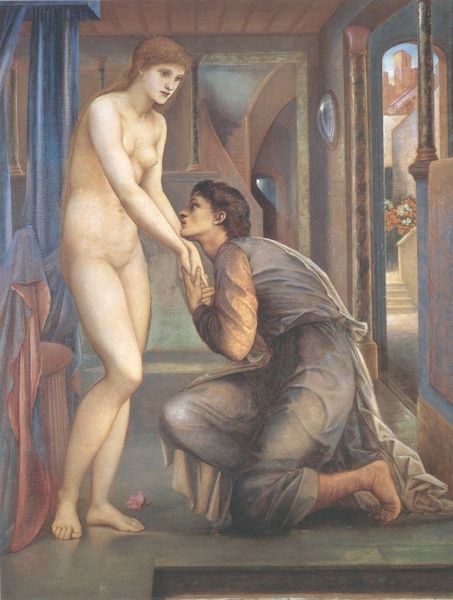
painting, oil-paint
#
portrait
#
painting
#
oil-paint
#
fictional-character
#
figuration
#
oil painting
#
female-nude
#
roman-mythology
#
mythology
#
symbolism
#
portrait drawing
#
history-painting
#
pre-raphaelites
#
nude
#
portrait art
#
male-nude
Copyright: Public domain
Editor: Today we are looking at "Psyche and Pan", an 1874 oil painting by Edward Burne-Jones, housed here at the Spencer Museum of Art. It has such an ethereal quality to it, yet also something unsettling in the expressions. How do you interpret this work? Curator: It's a quintessential Pre-Raphaelite painting, steeped in the symbolism and mythology that defined much of their output. But let's consider its Victorian context. Burne-Jones, along with artists like Rossetti and Millais, used historical and mythological subjects to subtly critique or offer alternatives to the increasingly industrialized, morally rigid society they inhabited. What's striking about this image? Editor: I think the unusual pairing. Psyche is delicate, and Pan is this…creature. They seem from different worlds, so there’s a power dynamic suggested. Curator: Exactly. Victorian society had very clear ideas about purity and morality. By pairing Psyche, often associated with the soul, with Pan, a symbol of nature and untamed instinct, Burne-Jones challenges these simplistic binaries. Is this a condemnation of raw nature? Or a recognition of the body's essential role in the soul's journey? The museum’s presentation impacts how we see it today, divorced as it is from Burne-Jones' direct social environment. Editor: So, it's not just about the mythological story itself, but how that story was used to speak to Victorian anxieties? Curator: Precisely! And remember, museums play a role, then and now, in shaping those very anxieties and prescribing what we see as “art.” What do you take away from understanding this socio-historical framing? Editor: I see now how the piece engages in a cultural commentary that gives it a much broader relevance. It really highlights the power of art to challenge the status quo. Curator: And perhaps, to remind us that those struggles for definition, between soul and body, order and chaos, remain with us today, filtered through the ever-changing institutions of art.
Comments
No comments
Be the first to comment and join the conversation on the ultimate creative platform.

